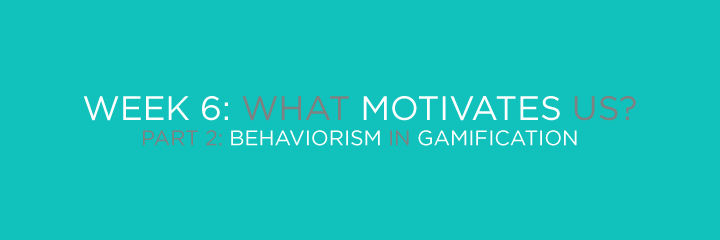What motivates us - Behaviorism in Gamification
- annemiekefrank

- May 20, 2016
- 2 min read
Last week’s lesson was very theoretical, so let’s have a look at how we can apply our practical thinking to Gamification. First off, let’s begin with two important mechanisms:
(1) Feedback loops: A circular process consisting out of action-feedback-response. When players receive feedback, they instantly understand that the action they are taking produces a result. This tends to be a very strong motivator to enforce a certain behavior (“Hey, you clicked this button, great job” will let you know that clicking the button is the right path to take and they will most probably click that button again or any other button)
(2) Reinforcements: Learning happens through reinforcing certain stimuli, which basically means, when you do a certain action, you produce a certain outcome, which then produces a result.
Feedback is a topic we’ve discussed over and over again. Humans crave feedback, which is super important for motivation. It is a vital part of Gamification and a wonderful game mechanic.

Now let’s have a closer look at reinforcements, more specifically reinforcements through rewards. Rewards are a behavioral feedback loop, meaning you the player take an action and by getting rewarded you learn that when performing a certain action, you get something in return. Be it badges, points, love, appreciation, whatever the reward system consists of. And you will come back for more. Of course there are other mechanisms that keep you hooked. But rewards are a pretty good thing. BUT rewards are not the holy grail, which we will discuss soon. For now, let’s have a closer look at reward systems.
Ever heard of the Dopamine System in your brain? It is the part that is associated with pleasure, meaning when you experience something pleasant your brain rewards you with dopamine. Now let me tell you something even more interesting, the structure in the brain associated with pleasure is also associated with learning. In general, what happens is, you release dopamine in response to a certain activity and you therefore start associating that activity with pleasure, which keeps you coming back.
Long story short: I am a player, I click a button, I receive a reward, my brain is flooded with dopamine, I learn that clicking the button makes me happy, I click again. Focus on creating rewards that maximize engagement based on dopamine release.
How do we do that? More next week!




















Comments